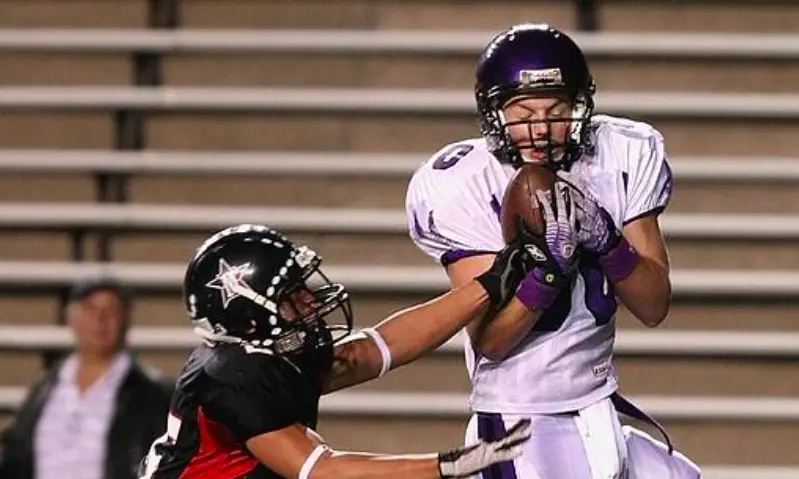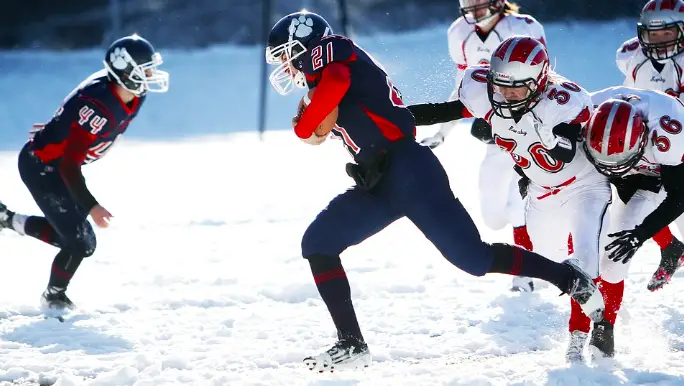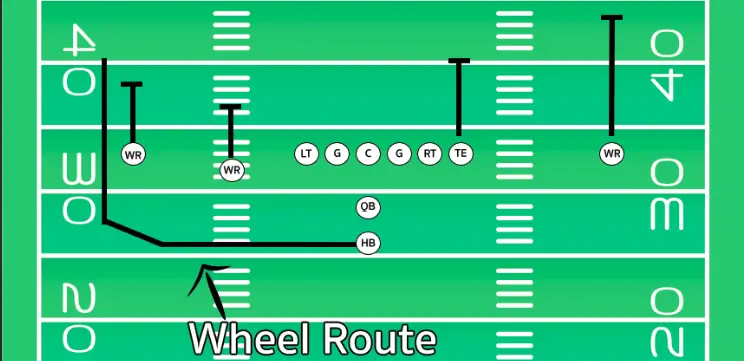Between hooks, flys, in and outs football routes can be a little tough to keep up with. This is why we’ve created this article to break down exactly what a wheel route is in football.
A wheel route in football involves a player running a short route laterally across the field only to suddenly turn upfield to beat the defender deep.
When the flat route is run by the running back he will start by running out into the flat. Once the running back gets near the sideline he will turn upfield and run towards the opponent’s end zone.
When a wide receiver runs this route he starts by taking a few steps towards the sideline as if he is about to receive the ball. Once the defender buys into the short route the receiver will then take off down the field.
This route is called a wheel route because the shape of the route is rounded when the player cuts upfield much like the shape of a steering wheel.
What To Know About Wheel Routes In Football?
Now that you know what a wheel route is in football it’s time to dig into how this route works. Below we’ll break down several key things you should know about wheel routes before you start running them.
Wheel Routes Thrive On Mismatches

One of the reasons that wheel routes are often successful is due to the mismatches they generate. Running backs are often some of the fastest players on the field and on a wheel route they are often going to be covered by a linebacker.
This isn’t a big issue for the defense if the running back is running a short route, but if the linebacker needs to match the running backs speed deep down the field then they may be in trouble.
This is why a wheel route can be so dangerous. Linebackers rarely have the top end speed to match a runningback so once the wheel route turns upfield the linebacker is going to have trouble keeping up.
The Key Is In The Fake

Another very important factor of the wheel route is like the stop and go pattern it is all about selling the fake. As the route starts the defender needs to believe that the route runner is running a route to the flat.
This lulls them into a false sense of security as the defender will start moving towards the flat to defend the pass.
Unfortunately for the defender, this is part of the deception, once they move towards the line of scrimmage to protect the flat the route runner will turn upfield.
Since the defender is now going in the wrong direction it will be nearly impossible to keep up with the route runner as he makes his cut deep downfield.
This paired with the speed mismatch between the route runner and the defender is going to allow the route runner to get past the defender and achieve seperation.
It Is A Long Developing Route

One aspect that cannot be ignored regarding wheel routes is the time they take to develop. Since the running back is going to have to run out to the flat and then start heading downfield he is effectively running two routes.
This is going to take a fair bit of time meaning that the offensive line is going to have to give your quarterback some great protection.
Unfortunately, the protection needed to run this route means that teams with poor pass protection are going to have trouble buying their quarterback enough time to let this route develop.
Requires A Clear Out
Additionally, the wheel route often requires a wide receiver to clear the area where the running back will ultimately catch the ball.
On a wheel route, the quarterback will usually have to lob in the pass in order to get it over the defender covering the route runner.
If the safety is sitting on that side of the field that lob throw on a wheel route would likely turn into an interception or at the least a hospital pass.
In order to clear that area of space teams will often have their wide receiver run deep through that portion of the field to clear out the safety.
So if you are getting tons of yards and touchdowns from a wheel route be sure to thank the wide receiver that is clearing out the area.
That is all in the wheel route learn the whole route tree by starting with our guide to seam routes or the skinny post receiving route.

